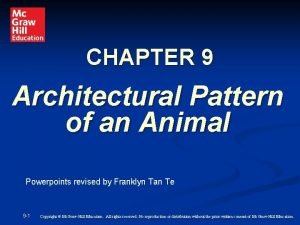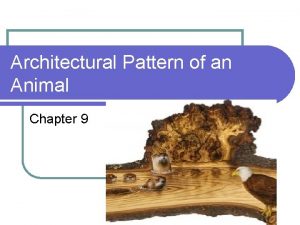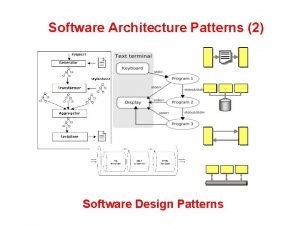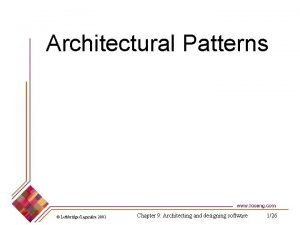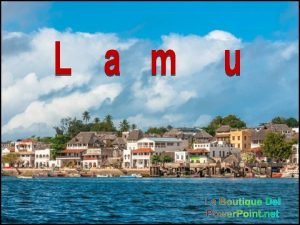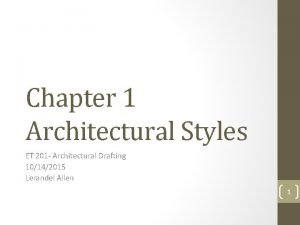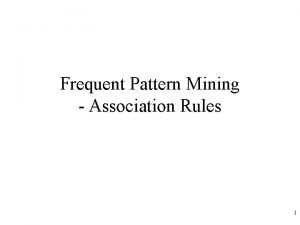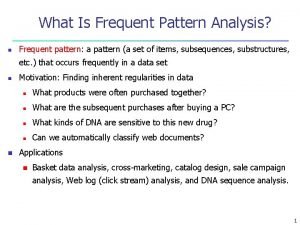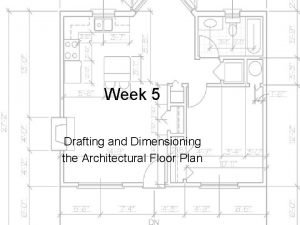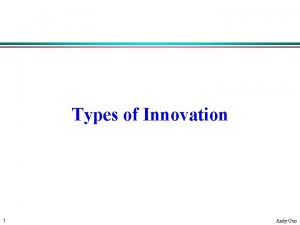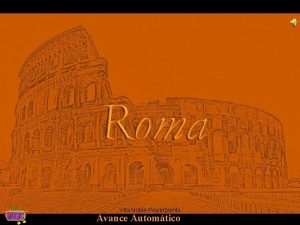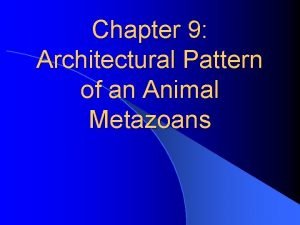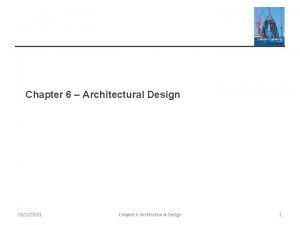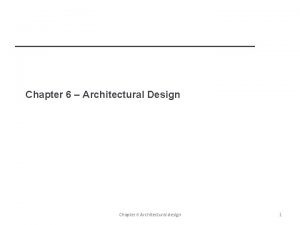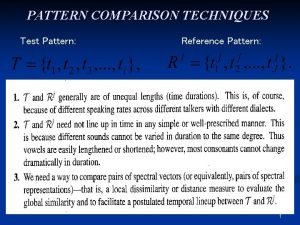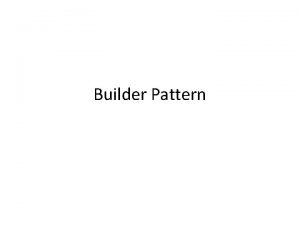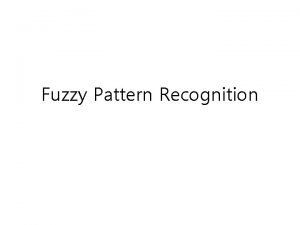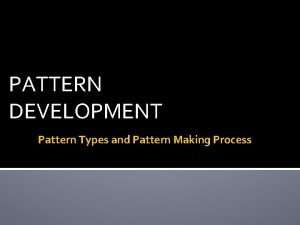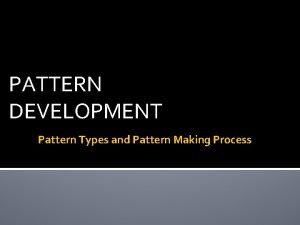CHAPTER 9 Architectural Pattern of an Animal Powerpoints






























- Slides: 30

CHAPTER 9 Architectural Pattern of an Animal Powerpoints revised by Franklyn Tan Te 9 -1 Copyright © Mc. Graw-Hill Education. All rights reserved. No reproduction or distribution without the prior written consent of Mc. Graw-Hill Education.

9 -2 Cnidarian polyps have radial symmetry and cell-tissue grade of organization (Dendronephthya sp. ).

New Designs for Living n Zoologists recognize 34 major phyla of living multicellular animals Survivors of about 100 phyla that appeared 600 million years ago during Cambrian explosion which was the most important evolutionary event in geological history. n All major body plans evolved within a few million years due to extensive selection and adaptation processes. n Basic uniformity of all life derives from common ancestry and similar cellular construction n 9 -3

Hierarchical Organization of Animal Complexity n Life is organized from simple to complex n n Each group is arranged to be more complex than the preceding one Five Grades of Organization n Protoplasmic Grade of Organization n Unicellular groups are the simplest eukaryotic organisms n Perform all basic functions of life within the confines of a single cell like the Paramecium n Protoplasm contains organelles with specialized functions and diversity among groups is due to varying subcellular components and structures 9 -4

Hierarchical Organization of Animal Complexity n Cellular Grade of Organization n Form metazoans—multicellular organisms like Volvox n Have greater structural complexity by combining cells into larger aggregates. n Cells are specialized parts of the whole organism but cannot live alone n Cells demonstrate division of labor and perform specialized tasks earlier accomplished by subcellular components of unicellular organisms. 9 -5

Hierarchical Organization of Animal Complexity n Cell-Tissue Grade of Organization n Cells grouped together into definite patterns or layers to perform a common function as a coordinated unit called tissue. n Most cells can still be scattered all around the body. n Animals are called eumetazoans like sponges and jellyfishes that represent this group. n Due to the unique structure of sponges, some scientists still classify them at the cellular level rather than the cell-tissue level. 9 -6

Hierarchical Organization of Animal Complexity n Tissue –Organ grade of Organization n Aggregated tissues now assembled into larger functional units called organs n Organs can be composed of more than one kind of tissue and have specialized functions n The heart is surrounded by connective tissues n Represented n Organ-System Grade of Organization n Several 9 -7 by flatworms organs work together to perform a common function for the survival of the animal n Considered the highest level of organization and associated with most complex animal phyla like nemerteans, crabs, and chordates

9 -8

Animal Body Plans n Animal body plans are different in: Grade of organization n Body symmetry n Number of embryonic layers n Number of body cavities n Symmetry is balance of proportions and the correspondence of size and shape of parts on opposite sides of a median plane n Types of Animal Symmetry n Spherical: ball shaped n Radial: tube- or vase-like n Bilateral: right and left sides n 9 -9

Figure 9. 1 Different types of animal symmetry. 9 -10

Animal Body Plans n Spherical symmetry n Any plane passing through the center and divides the body into mirrored halves n Best suited for floating and rolling n Found in unicellular forms but rare in large animals n Radial symmetry n Body 9 -11 divided into similar halves by more than two planes passing through longitudinal axis n Found in sponges, jellyfishes, sea urchins, and related groups n End of tubular body forms mouth called oral surface while the opposite end forms basal attachment disc called aboral surface

Animal Body Plans n Biradial symmetry n Variant form radial symmetry n Have part that is single or paired rather than radial n Only two planes passing through the longitudinal axis that produces mirrored halves n Usually sessile, freely floating, or weakly swimming animals like ctenophores n No anterior or posterior end n Can interact with the environment in all directions 9 -12

Animal Body Plans n Bilateral Symmetry n Organism divided along a sagittal plane into two mirror portions forming right and left halves n Much better fitted for directional (forward) movement which is advantageous to an animal moving through its environment head first n Associated with cephalization which is the differentiation of a head region and the concentration of nervous tissues and sense organs in the front area n Also has mouth in front to allow for more efficient feeding and detection of prey 9 -13

Animal Body Plans n Regions of bilaterally symmetrical animals: n n n n n 9 -14 Anterior- head end; Posterior-tail end Dorsal- back side; Ventral- bottom or belly side Medial- midline of body Lateral- right and left sides Distal- parts farther from the middle of body Proximal- parts are nearer the middle of body Frontal plane (coronal plane)- divides body into dorsal and ventral halves Sagittal plane- divides body to right and left Transverse plane (cross section)- divides body into anterior and posterior halves

Figure 9. 2 The planes of symmetry as illustrated by a bilaterally symmetrical animal. 9 -15

Body Cavities and Germ Layers n Body cavity Internal space represented by gut cavity and fluid-filled body coelom that cushions and protects internal organs n Body cavity is dependent on mesodermal pouch formation during gastrulation n n Types of body cavities Acoelomate: no body cavity n Pseudocoelomate: partial body cavity n Coelomate: true body cavity n 9 -16

Body Cavities and Germ Layers n Variations in body cavity formation In Sponges n Cellular grade of organization and have no real body cavity- Acoelomate n n After blastula formation, cells reorganize to form adult body and does not form gastrula n Cells grow and surround a chamber called spongocoel n Blastula has no external opening so no gut cavity forms 9 -17

Body Cavities and Germ Layers In other animal phyla n Development proceeds from blastula to gastrula n n Invagination of surface cells form the archenteron or primitive gut n Opening to archenteron is the blastocoel and becomes the mouth or the anus n Embryo now has two cavities- gut and blastocoel n Inside gut is lined by endoderm n Outer layer of cells is ectoderm n Middle area lined with mesoderm 9 -18

Body Cavities and Germ Layers n In Protostomes Mesoderm forms as endodermal cells near blastopore migrate into the blastocoel n Three body plans are possible n n Acoelomate 9 -19 plan n Mesodermal cells completely fill the blastocoel so no body space is formed n Gut is only body cavity n Region between ectoderm and endoderm is filled with spongy mass of parenchyma cells that are from embryonic connective tissue and are important for transport and disposal of metabolic wastes

Body Cavities and Germ Layers n 9 -20 Pseudocoelomate plan n Mesodermal cells line the outer edge of the blastocoel only partially lined with mesoderm n Pseudocoelom is a false body cavity n Two body cavities formed where persistent blastocoel forms pseudocoelom and a gut cavity

Body Cavities and Germ Layers n Schizocoelous coelomate plan n Mesodermal cells fill blastocoel and then splits to form a space called a coelom n. A true body cavity that is completely lined by mesoderm n Two body cavities are formed: gut and coelom 9 -21

Body Cavities and Germ Layers n In Deuterostomes n Mesoderm forms by an enterocoelous plan where cells from the central gut lining form pouches and expand into blastocoel n Pouch wall forms mesodermal ring and pouches enclose a space, the coelom cavity n Pouches pinch off from gut lining completely enclosing the coelom bounded by mesoderm. n Forms two body cavities- gut and coelom n Mesodermal mesenteries suspend organs in the coelom 9 -22

Schizocoelous plan Enterocoelous plan Figure 9. 3 Mesoderm resides in different parts of the gastrula. 9 -23

Figure 9. 4 Acoelomate, pseudocoelomate, and eucoelomate body plans are shown as cross sections of representative animals. 9 -24

Developmental Origins in Triploblasts Body Plans Triploblastic animals follow one of several major developmental pathways n Most common pathways are by spiral or radial cleavage n Radial cleavage n n Typically accompanied by three traits n Blastopore becomes the anus and new opening becomes the mouth n Coelom formation is by enterocoely n Cleavage is regulative n Animals with these features are called deuterostomes 9 -25

Developmental Origins in Triploblasts Body Plans n Spiral cleavage n Produces embryos whose developmental pattern contrast with those of deuterostomes n Blastopore becomes the mouth n Cleavage is mosaic n May be acoelomate, pseudocoelomate, or coelomate via schizocoely n Animals with these features are called lophotrochozoan protostomes n Ecdysozoan n Exhibit 9 -26 protostomes a range of cleavage patterns including spiral and superficial cleavage n Can be coelomate or pseudocoelomate

Figure 9. 5 Different developmental sequences produce diploblastic versus triploblastic animals. 9 -27

A Complete Gut Design and Segmentation n Types of gut design n Few diploblasts and triploblasts form blind or incomplete gut cavity n Same opening for entrance of food and exit of wastes n Most common animal groups form a complete gut n Allows for one-way flow of food from mouth to anus n Tube-within-a-tube design is very adaptive to the various types of food 9 -28

A Complete Gut Design and Segmentation n Metamerism (Segmentation) Serial repetition of similar body segments alongitudinal axis of body n Each segment is a metamere or somite that contains internal and external structures of several vital organ systems n n Segments can be seen during early development and also appear as superficial ectodermal and body wall features in adults n Permits greater body mobility and complexity of structure and function n Found in annelids, arthropods, and chordates 9 -29

9 -30 Figure 9. 6 Phyla with segmentation.
 Enterocoelous plan
Enterocoelous plan Architectural pattern of an animal
Architectural pattern of an animal Blackboard design pattern
Blackboard design pattern Architectural pattern in software engineering
Architectural pattern in software engineering Color of br2
Color of br2 Fish gill structure
Fish gill structure Vitanoble powerpoints
Vitanoble powerpoints Livestock judging reasons
Livestock judging reasons Powerpoint boutique
Powerpoint boutique La boutique del power point
La boutique del power point La boutique del powerpoints
La boutique del powerpoints La boutique del powerpoint pps
La boutique del powerpoint pps La boutique del powerpoint
La boutique del powerpoint La boutique del powerpoints
La boutique del powerpoints La boutique del powerpoint
La boutique del powerpoint La boutique del powerpoints
La boutique del powerpoints Vitanoble powerpoints
Vitanoble powerpoints La boutique del powerpoints
La boutique del powerpoints Chapter 1 architectural styles
Chapter 1 architectural styles Venn diagram of plant and animal cell
Venn diagram of plant and animal cell Animal cell venn diagram
Animal cell venn diagram Animal rights versus animal welfare
Animal rights versus animal welfare Primary classification
Primary classification Pattern and pattern classes in image processing
Pattern and pattern classes in image processing L
L Closed pattern and max pattern
Closed pattern and max pattern Load bearing wall symbol
Load bearing wall symbol Modular innovation examples
Modular innovation examples Blackboard architecture style example
Blackboard architecture style example Call and return architecture examples
Call and return architecture examples Architectural risk analysis
Architectural risk analysis
